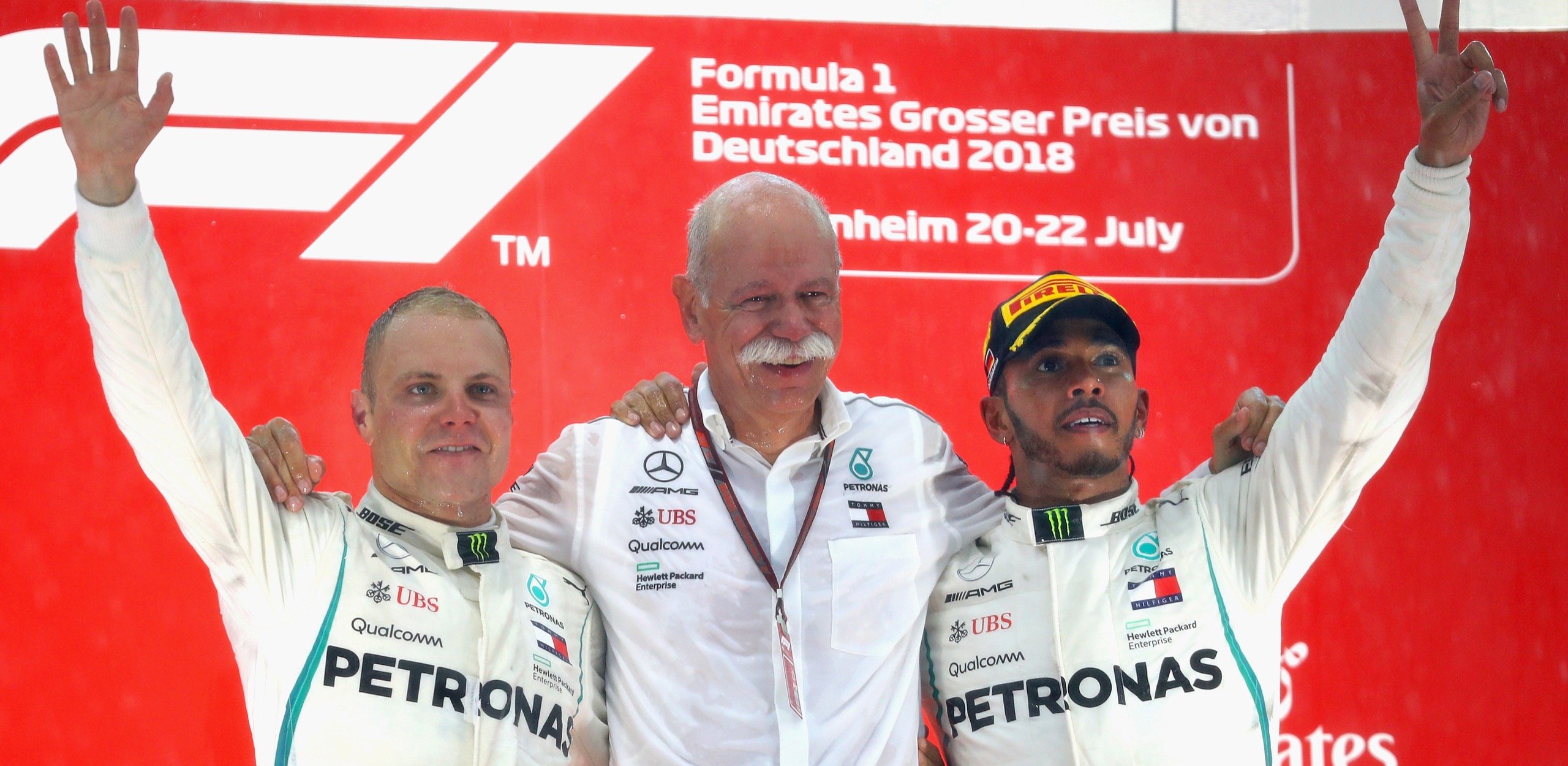Lewis Hamilton victorious in the rain-plagued Germany Grand Prix after leader Sebastian Vettel suddenly crashes with 15 laps remaining.
Lewis Hamilton came from 14th on the grid to win the German Grand Prix by 4.535 seconds over his Mercedes teammate, Valtteri Bottas for a Mercedes 1-2 finish ahead of Ferrari’s Kimi Raikkonen. Title-rival Sebastian Vettel had led for the majority of the race from pole position but crashed his Ferrari at the Sach’s Curve as a threatening rainstorm finally struck the Hockenheim circuit with 15 laps remaining.
The win was the 66th of Hamilton’s Formula One career, his fourth this season and his third at the Hockenheimring. It was also Hamilton’s fourth triumph in the German Grand Prix, his 44th win for Mercedes and his first from this far down the grid.
The victory allowed Hamilton to retake the lead in the championship standings. He entered the German Grand Prix eight points behind previous leader Vettel and emerged with a 17-point advantage.
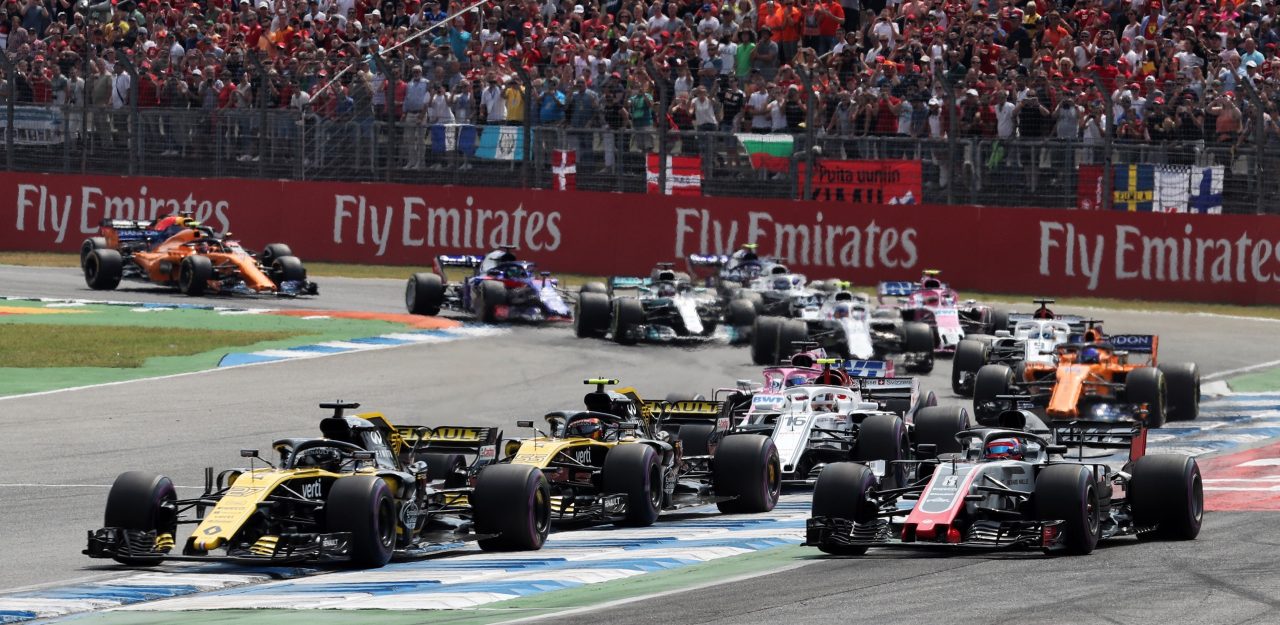
While Hamilton’s aggressiveness brought him close to the front, it was Mercedes strategic moves as weather threatened that put him into position for victory. Choosing the correct tyre and timing the change put extreme pressure on every team as the rain decided to flirt and then deceive lap after lap.
Mercedes gave Hamilton a set of ultrasoft tyres, gambling that the rain would not be so intense and the ultrasoft would be the best tyre in that situation. Ferrari gambled on keeping Vettel out longer before changing compounds, and when the light rain briefly intensified, it caught the German out as if he had been hit by lightning.
“We have a strong car, and we can be more confident than anyone else. I had it in my hands, small mistake and big disappointment. I apologise to the team,” said Vettel.
“(Winning) was highly unlikely but you always have to believe,” said Hamilton. “The team did a great job; I kept pushing and believing. It was so tough there; conditions were perfect for business time! For those who don’t know me, now they do!”
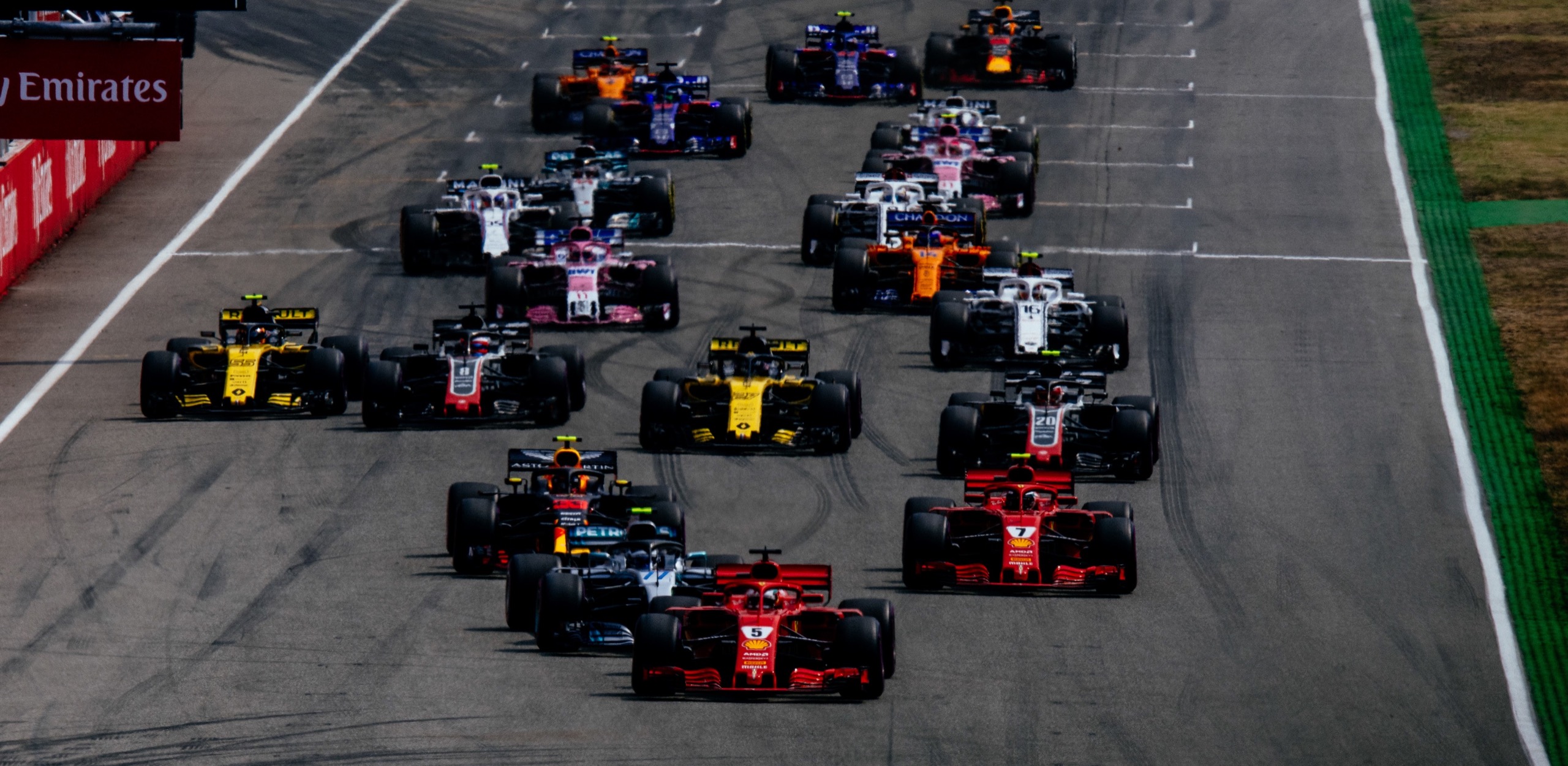
Red Bull’s Max Verstappen set the fastest ever lap around Hockenheim in Fridays FP2, but practice times are misleading. So could Red Bull take the fight in Germany to Mercedes and Ferrari in Q1? The Dutchman indeed was having a great time explaining.
“My lap was a bit compromised, I had traffic,” explained the Dutchman of his blistering 1m 13.085s effort. We’ll see.”
However, Q1 would be all about Lewis Hamilton. After posting the fifth fastest time, the British driver began sliding off the track. Hamilton power steering was failing, but before he backed off, he ploughed through rough grass and bounced over a kerb, going full airborne before landing. The Mercedes then slowed to a crawl.
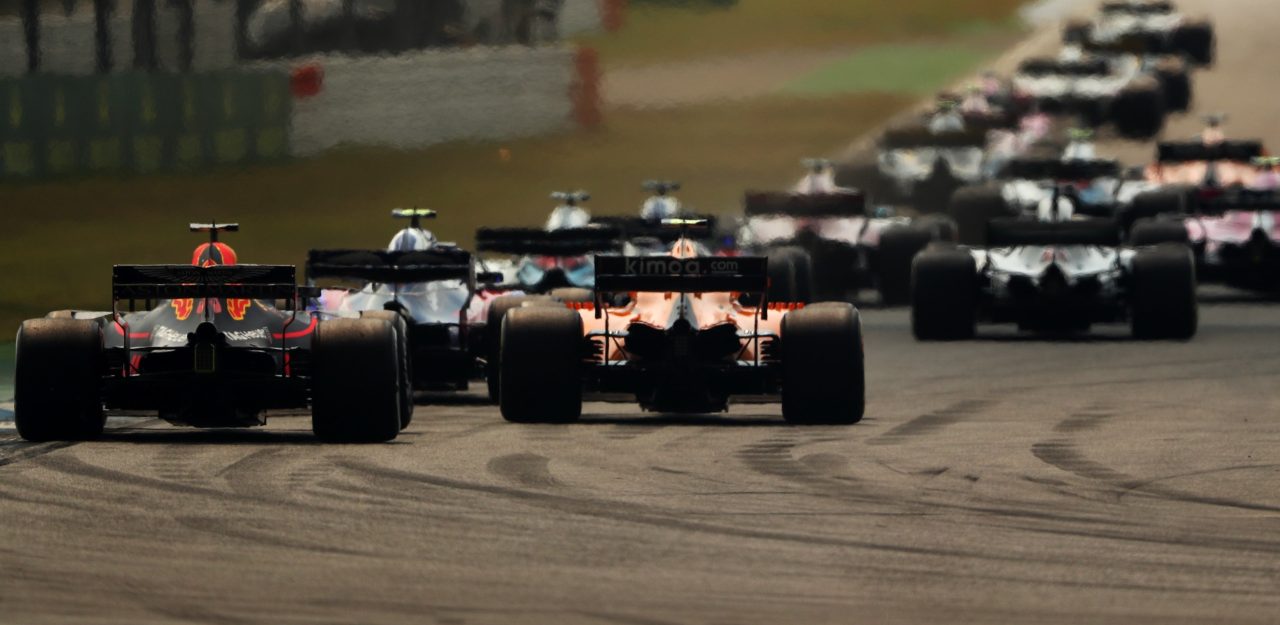
While still movable, Hamilton’s first thoughts were to get the car back to the garage at all costs. Hamilton leapt out, pushing the Mercedes down the track, but quickly realised his effort was futile. He would start 14th.
By Q3, it was apparent the shoot-out was between the two Ferraris of Raikkonen and Vettel and the Mercedes of Bottas, with FP2 leader Verstappen in with an outside chance in his slower Sector 3-loving Red Bull. Vettel sat on the provisional pole after the first run. Bottas was superb in his second run, beating Vettel by two-tenths, for his new track record. It was short-lived. Vettel put in an otherworldly scorcher, lowering his previous time by yet another two-tenths, setting the record at 1:11. 212.

At the start, Vettel leapt toward Turn 1, but in an instant, Bottas was with him. Vettel remained steady, holding off Bottas who reacted faster to the lights. Verstappen and Raikkonen were in their usual nose-to-tail battle configuration, with the Dutchman lifting slightly to avoid touching the Finn. At the end of the opening lap, Vettel was pulling away from Bottas, and then Raikkonen, Verstappen, Magnussen, Hulkenberg, Grosjean, Perez and Sainz.
By Lap 3, Lewis Hamilton was up into the Top 10; he was past Sainz for ninth on Lap 6. Nevertheless, with the field spreading out quickly, his easier passes were finished. With more than 20-seconds to Vettel, he would the need the forecasted rain to make something substantial happen. In the lead, Vettel remained comfortably just under four seconds over second place man Bottas, as fourth-place Verstappen clung to Raikkonen as the clouds began to darken.
Thus began the teams’ strategists’ battle of storm prediction and mitigation. Which team would pit first, and what tyre strategy would they engage? No one wanted to be caught pitting their driver for a new set of dry tyres if the rain was minutes away. Drivers were told to protect their tyres with the expectation of running until just before the rains arrived. The Hamilton passed Magnussen for fifth on Lap 14, bringing him within striking distance of the lead if he changed to the faster tyre.
Ferrari countered, pitting Raikkonen on Lap 15, trying to goad Bottas into covering, while also bring him out in front of Hamilton. Raikkonen would once again pull duty as a blocker for Vettel. Raikkonen set the fastest lap to that point on his first flying lap.
Unexpectedly, the Finn also ended up sitting in front of teammate Vettel after the German’s stop on Lap 25.
By Lap 27 Bottas led the race ahead of Verstappen, as neither had stopped yet, trailed by Raikkonen, Vettel, Hamilton and Ricciardo. But the Australian retired soon after, reporting a loss of power. It was his second retirement in three races. Ominously Vettel was tearing his tyres apart staying so close to the Finn.
By Lap 38, Vettel was on the radio announcing that his rear tyres where overheating while Hamilton was waiting for the rain, which was predicted to fall around Lap 40-45. Vettel’s pace at this stage was still good.
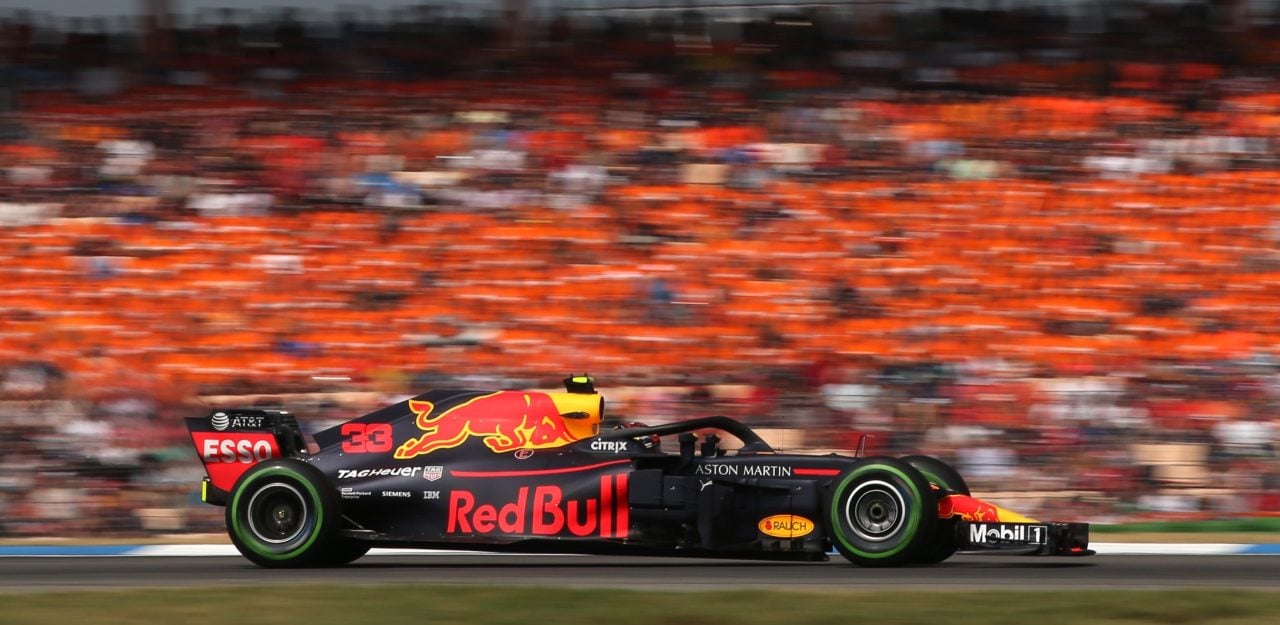
“Don’t you see the tyre temperature? Do you see it? What are you waiting for?” Raikkonen was told to let Vettel past, and he complied.
By Lap 40, every teams’ strategist had their eyes on the sky. Hamilton was only seven seconds behind Vettel, and on Lap 43 Hamilton was pitted for ultra softs. Mercedes felt they had a window before the rain became fierce. They would give Hamilton the most aggressive tyres and have him attack. Should the rain arrive early, his stickier tyres would afford him the most grip, to a point.
Hamilton rejoined fifth behind Verstappen. The rain arrived a lap later at Turn 6. Confusion ensued.
Sauber put Leclerc on intermediates, hoping to make up positions before other teams reacted; McLaren brought Alonso in for the same gamble. Verstappen pitted for intermediates, losing a position to Hamilton. Farther down the pit lane, Toro Rosso put full wets on Gasly, who then had to lap with tyres meant for the deepest of water. He fell to the tail end of the field.
Hamilton now in fourth greeted the light rain and cooler track temperatures with aggression. He was now lapping two seconds a lap faster than both Vettel and Raikkonen. Vettel responded by picking up his pace, but during the lap made a mistake, breaking off a piece of his front wing. Vettel led Raikkonen by 6.7 seconds, with Bottas in third, Hamilton flying in fourth just 15 seconds behind Vettel with 17 laps remaining.
A lap later, the rain intensified. Bottas attacked Raikkonen whose tyres were now very worn and passed him for second place on Lap Lap 51.
Pushing to hold the gap to Bottas and the energised Hamilton, Vettel entered Sachs Curve a touch too hot on Lap 52. Without the missing front wing endplate, his front tyres lacked the downforce of the prior lap, and his Ferrari began to rotate, entering the gravel on the outside of the turn and spearing the barriers. As if due to a lightning strike, Vettel was out on the spot.
This time, the Safety Car was called out, and full chaos erupted. With just 15 laps from the end of the race, Bottas immediately pitted, but Mercedes wasn’t ready with tyres. Hamilton was told to pit, then told no, then yes, although by then he was back on the front straight. His manoeuvre back on the racing surface had caused him to cut across the grass at the last minute, breaking a firm FIA rule, and bringing in the stewards’ option for a time penalty.
When the chaos subsided, Raikkonen now led on worn soft tyres; Hamilton was second on fresher ultrasofts. Raikkonen pitted for fresh ultrasofts on the next lap, rejoining third behind Hamilton and Bottas.
When the race restarted on Lap 58, Raikkonen, in third place, trailed too far behind Bottas to mount an attack. Indeed, Bottas now on fresh tyres attacked Hamilton. His move failed, and the Finn received the message to hold his second position. Bottas didn’t argue.
Verstappen salvaged fourth, with Hulkenberg fifth. Grosjean finished sixth for Team Haas, as Perez, Ocon, Ericsson and Hartley claimed seventh through tenth places.
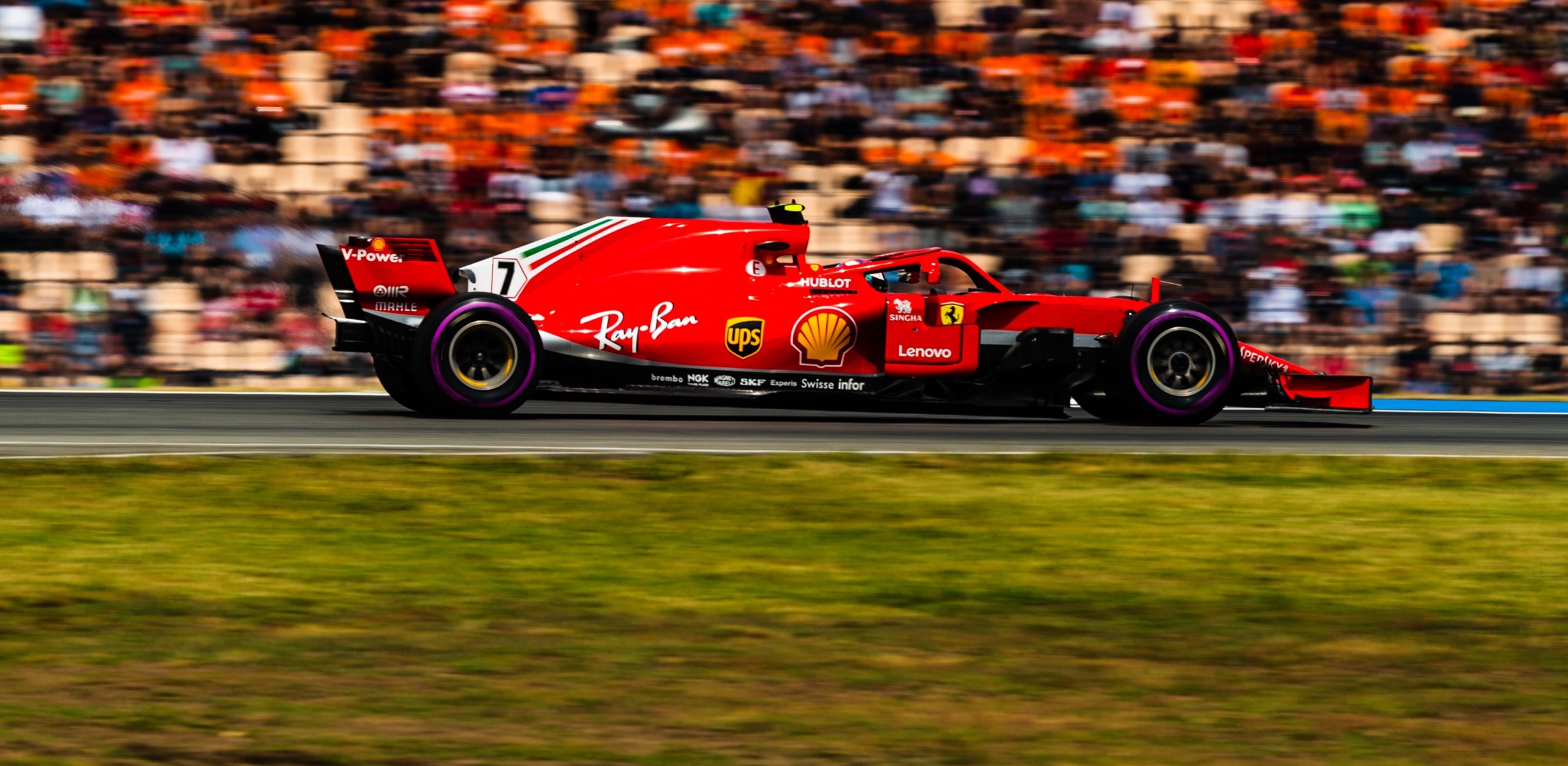
Following the trophy ceremony, Hamilton received an FIA reprimand for entering the pit lane on lap 53, only to respond to his team’s order to stay out at the last moment by cutting across the grass strip separating the pit lane entrance and the track.
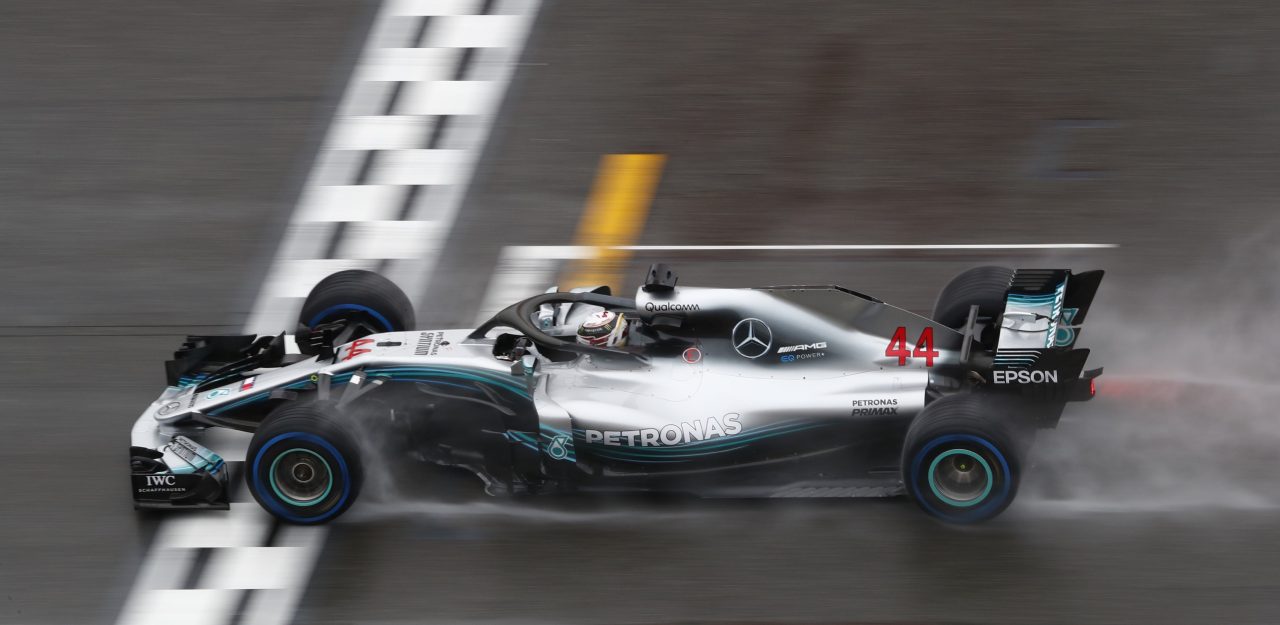
Hamilton’s victory margin of 4.5s over Valtteri Bottas placed his win under threat, as the precedent set for a similar incident with Kimi Raikkonen at the 2016 Azerbaijan Grand Prix was a five-second penalty. Because the infringement took place during a Safety Car period in the midst of mass team confusion, Hamilton dodged the time penalty and kept his victory.
